How to help our kids understand consent and set (and respect!) boundaries? It’s a surprisingly controversial topic. Guest writer Bee Trudgeon reflects on this area of contention and sets out to find some books that can help facilitate this conversation; a journey that ends up highlighting a gap in our local market for such resources.

Recently, at an outdoor concert, I caused a stern ripple in the crowd by simply asking not to be touched. I turned to face my assailant and I had no problem calmly, but clearly, articulating (for the second time) three simple words…
“Don’t touch me.”
While annoyed to have my initial request ignored, what struck me as equally irritating was hearing people around me repeating, “What did she say?,” as if I’d done something astonishing.
“She said: ‘Don’t touch me!?’,” they exclaimed, incredulous.
It was as if my right to remain unmolested was more outrageous than the act that elicited it.
Straight up, I am outrageously entitled; as entitled to autonomy over my body, mind, and time as anyone should be, and super-frustrated that the natural possession of this right is not inherent in many of the youths I meet. In the name of defending their bodies from the earliest age, young navigators of wild waters—and those instilling their compasses, particularly if their own has had its hands snapped—could be aided by the excellent books below.
This Is My Body – I Get to Choose: An Introduction to Consent, by Brook Sitgraves Turner, with photographs by Kati Douglas
This is an excellent preschool resource with short, rhythmic text that drives home the importance of maintaining personal and social boundaries, and engaging photographs that show what children practising consent (around the world) can look like. I love that ASL (American Sign Language) is represented as one of the ways a child might say “no”, as well as the easy inclusion of people with varying physical abilities. It’s a great, sturdy picture book, built for the little fingers of those just learning to read. Even though it is technically marketed for your youngest readers, there is plenty of food for thought for thinkers of all ages. The photographs in particular are sure to be much-explored and make for great tools to invite further discussion.
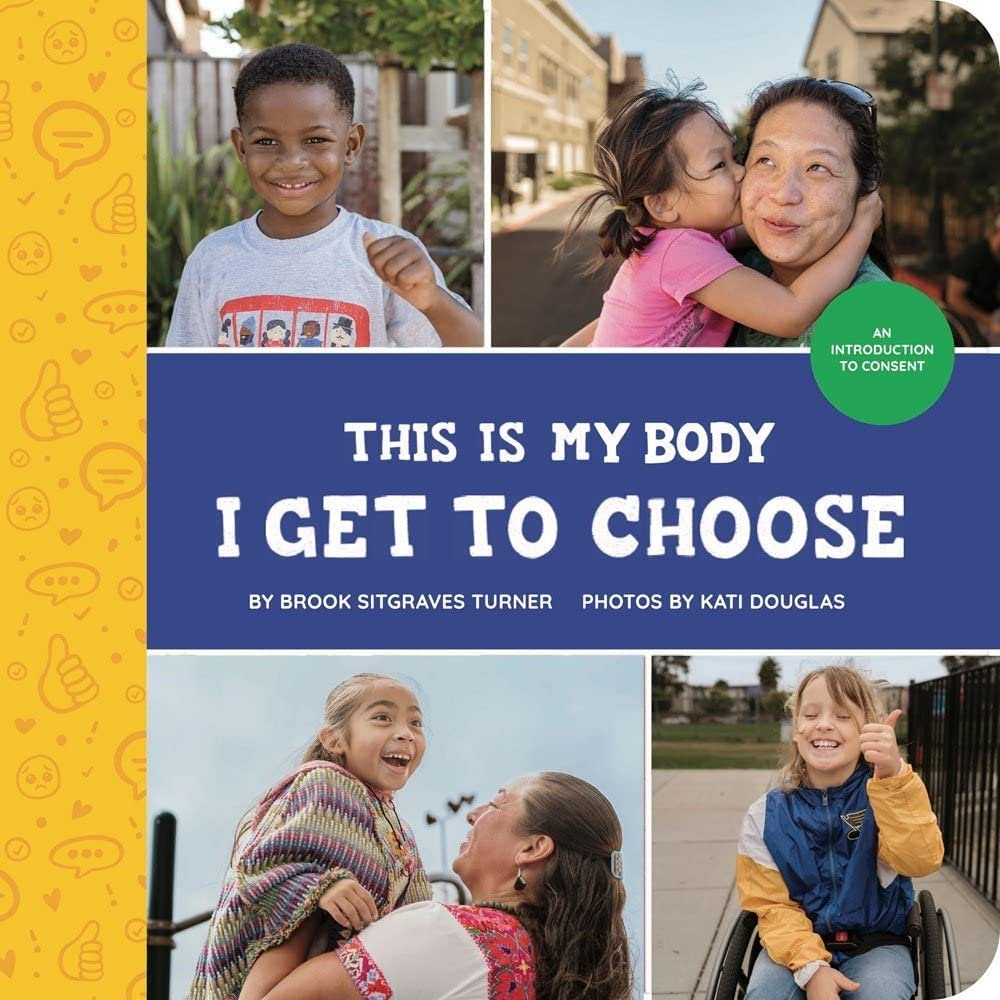
This Is My Body – I Get to Choose: An Introduction to Consent
By Brook Sitgraves Turner
Photographs by Kati Douglas
Published by Little Feminist Press
Yes! No!: A First Conversation About Consent, by Megan Madison, Jessica Ralli, and Isabel Roxas (available in hardback and board editions)
This bright and breezy book doesn’t pull any punches when it comes to the important stuff: body parts are named and depicted in a no-nonsense style and the text falls into a nice statement-thought-question pattern, exploring bodily autonomy. It lets us know:
‘People like and want different things at different times.’
A wide range of ways to say no is depicted and encouraged to practise with—including ASL—as are a range of physical abilities, ages, and ethnic backgrounds. I particularly like the way a wheelchair is seen as part of its owner’s body, not something to be touched (or pushed) without asking. The right to change your mind is reiterated, as is the need to accept no for an answer if you are the one seeking consent.
This book is part of the helpful First Conversations series of beginner guides to love, relationships, and families.
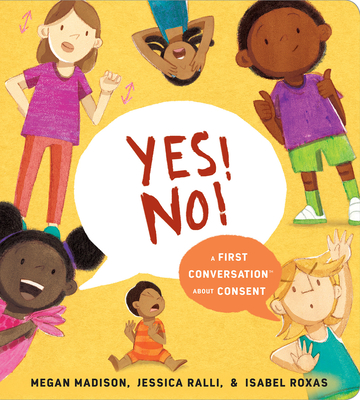
Yes! No!: A First Conversation About Consent
By Megan Madison, Jessica Ralli and Isabel Roxas
Published by Penguin Young Readers Group
Want a Hug?: Consent and Boundaries for Kids, by Christine Babinec, with illustrations by Vivan Mineker
This non-fiction picture book helps readers talk about boundaries and the power of consent from the earliest age. It highlights the importance of respectful and caring communication, something that involves active listening. Consent has to be communicated before it can be understood, and learning the different ways people might communicate it is key.
No, Grandma, the child screaming, “No kiss Grandma! No!,” is not up for a little smooch, as much as you may want to plant it. That’s where the listening part is important. Another person’s consent is not dependent on what you want to hear.
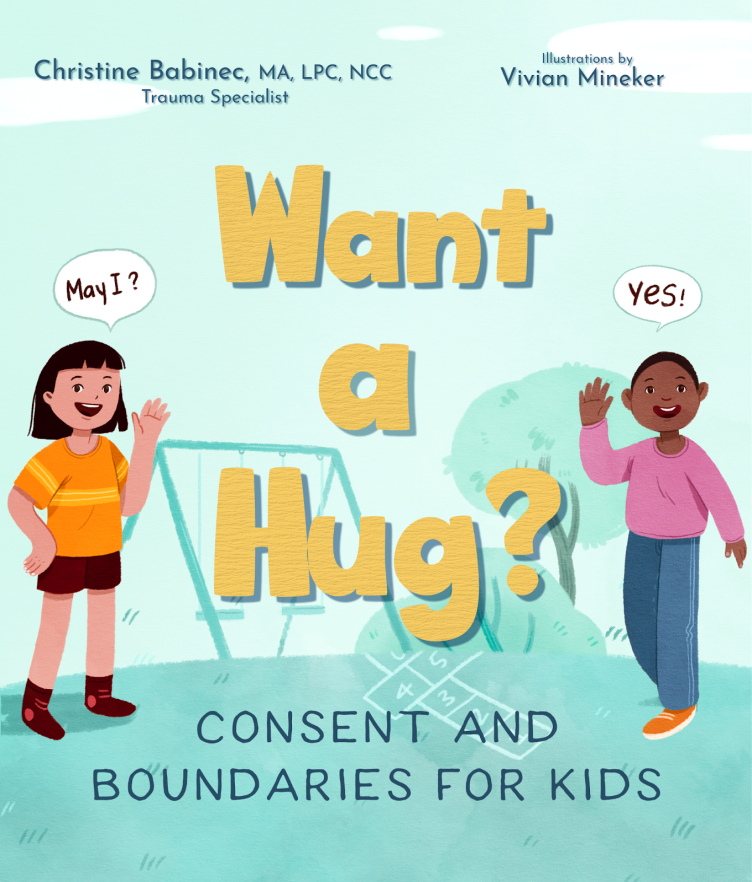
Want a Hug?: Consent and Boundaries for Kids
By Christine Babinec
Illustrations by Vivian Mineker
Published by Familius
Tell Me About Sex, Grandma, by Anastasia Higginbotham
Dialling things up a notch on the intimacy-ometer, Anastasia Higginbotham (who’s no stranger to strident criticism of her excellent work) teaches: ‘The most important part of sex [is] the choosing part.’ In this astonishingly beautiful book, the titular oracle emphasises that sexuality is one’s birthright, a precious treasure that grows more multifaceted and awesome over the course of a lifetime. Grandma highlights the fact that we all have the right to make our own choices about sex—at every age—today and forever. In an “activities” section, it is suggested children read the following affirmation out loud:
‘I am the one-and-only, top-boss, in-charge decider about sex in my life for my whole life. Everyone else is the boss of themself too.’
You’ve got to love that attitude.
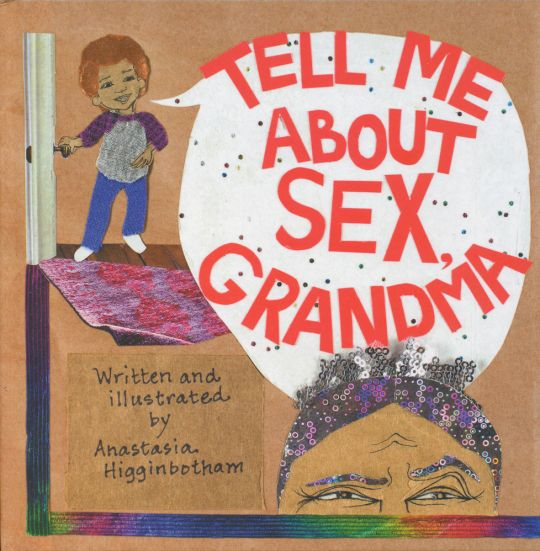
Tell Me About Sex, Grandma
By Anastasia Higginbotham
Published by Dottir Press
You Ruined It: A Book About Boundaries, by Anastasia Higginbotham
Higginbotham’s You Ruined It: A Book About Boundaries examines the fallout that occurs when consent is coerced or forced rather than freely given. An eleven-year-old girl who has been sexually assaulted by an older cousin talks out her feelings, with the support of her loving mother and sister.
Both books by Higginbotham are part of her outstanding Ordinary Terrible Things series, presenting thorny subjects in a down-to-earth style that utilises collage, illustration, and hand-written text.
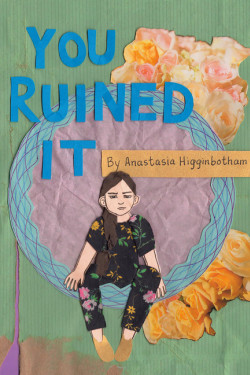
You Ruined It: A Book About Boundaries
By Anastasia Higginbotham
Published by Dottir Press
Consent (For Kids!): Boundaries, Respect, and Being in Charge of You (US edition), by Rachel Brian
(Also released in the UK as Respect: Consent, Boundaries and Being in Charge of You, and available in Traditional Chinese)
This is the book that inspired this list. I wanted to share it with everyone I knew and pressed it into the hands of many people I didn’t really know. My favourite comment came from a middle-aged, male comics fan I showed it to, who said: “I would never know such a book would exist, but I’m really glad it does.”
Brian’s graphic novel style immediately attracts readers; there are so many shareable pages and spreads, presenting radical commonsense in unique ways. My favourite two include: ‘The Badger – a mini-comic about relationship boundaries’ which makes the excellent point that it is OK to revoke consent, and a strip cautioning against assuming consent based on someone’s outfit. The best quote in the book comes from a brief pool-side exchange between a swimmer and someone (in a bathing suit) standing near the water:
“You must be excited to swim,” the swimmer says.
“No, actually, I just like wearing this. I’m planning on wearing it to dinner,” says the person who simply does not feel like getting wet today.
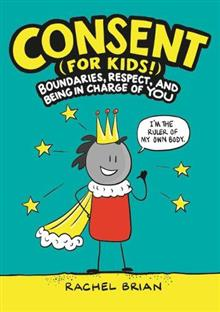
Consent (For Kids!): Boundaries, Respect, and Being in Charge of You
By Rachel Brian
Published by Little, Brown Books for Young Readers
Welcome to Consent: How to Say No, When to Say Yes and Everything in Between, by Yumi Stynes and Dr Melissa Kang, art by Jenny Latham
This is a straight-up and humorous, all-gender inclusive (hooray!) guide to navigating consent for tweens and teens. The award-winning authors of Welcome To Your Period decode the rules of consent, utilising a visually appealing layout. They tell us:
‘Sometimes “no” is more beautiful than “yes” […] because it means the person communicating this has successfully shown you where their boundaries are.’
Shortlisted for the Australian Book Industry Awards Book of the Year for Older Children, this book is part of the Welcome to You series, which also includes titles like Welcome to Sex: Your No-silly-questions Guide to Sexuality, Pleasure and Figuring it Out.
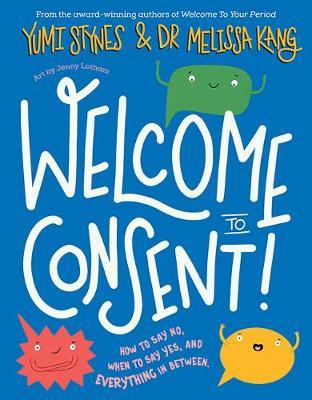
Welcome to Consent: How to Say No, When to Say Yes and Everything in Between
By Yumi Stynes and Dr Melissa Kang
Art by Jenny Latham
Published by Hardie Grant Children’s Publishing
Tell Me: What Children Really Want to Know About Bodies, Sex and Emotions, by Katharina von der Gathen, illustrated by Anke Kuhl
&
Any Body: A Comic Compendium of Important Facts and Feelings About Our Bodies, by Katharina von der Gathen, illustrated by Anke Kuhl
German duo Katharina von der Gathan and Anke Kuhl’s true life questions and answers book Tell Me: What Children Really Want to Know About Bodies, Sex and Emotions touches on consent, letting us know (for example) that, sometimes, even married people don’t want to have sex.
Gecko Press (who publishes their excellent work) has a third book from the duo (who also gave us Do Animals Fall in Love?) titled Any Body: A Comic Compendium of Important Facts and Feelings About Our Bodies which is due to hit the shelves as this is written. The new book is a visually sparky, encyclopaedia of body topics, and includes discussions about consent and gender identity (two topics that should always go hand-in-hand).
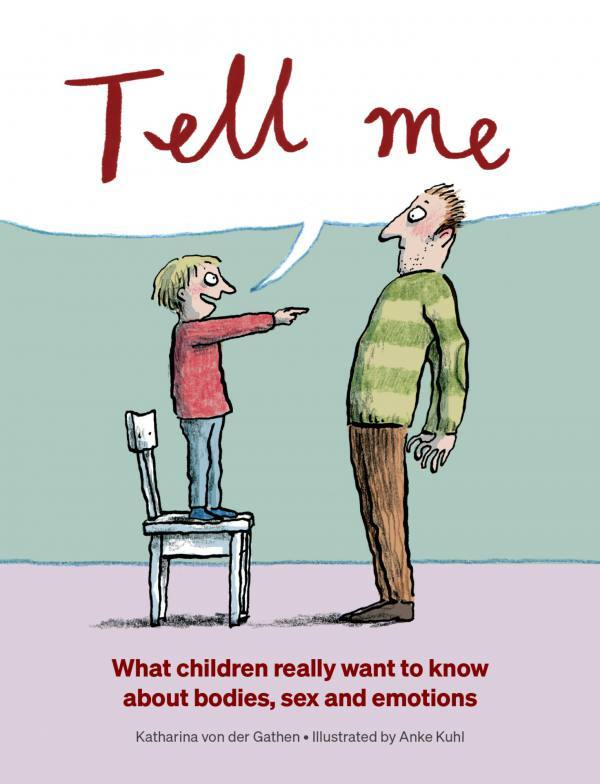
Tell Me: What Children Really Want to Know About Bodies, Sex and Emotions
By Katharina von der Gathen
Illustrated by Anke Kuhl
Published by Gecko Press
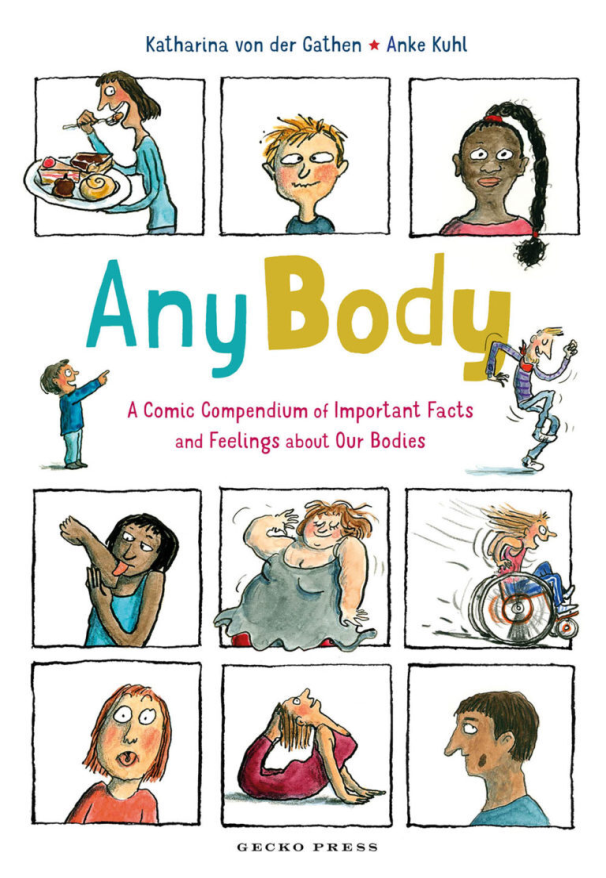
Any Body: A Comic Compendium of Important Facts and Feelings About Our Bodies
By Katharina von der Gathen
Illustrated by Anke Kuhl
Published by Gecko Press
As far as local or indigenous approaches to consent in Aotearoa, a quiet vacuum greets searchers. Major New Zealand book distributor Wheelers tags and categorises some relevant titles as ‘Aotearoa NZ Curriculum’ and/or ‘NZ Curriculum Health and Physical Education’, but none of the books on consent are actually produced here. This suggests a gap that needs to be met. After all, what does consent look like to the youth of 21st-century Aotearoa?
A question I would like to see explored is how ethnic backgrounds play into our individual standings, in terms of bodily autonomy and self-determination. Are the struggles different between the cultures that make up our nation? Who in particular needs to be spoken to most urgently? And what can mātauranga Māori contribute to the learning?
Kia whakatōmuri te haere whakamua. I walk backwards into the future with my eyes fixed on the past.
It is important to note that sometimes finding a trusted adult can be the hardest thing in the world for a child, particularly one who has been betrayed by adults they should have and were told they could trust. Sometimes that reliable person is going to speak to them from a book. While it is useful to find international resources on consent, it can prove difficult for readers from Aotearoa to believe and connect with stories where they are not explicitly represented.
We need books that teach us how to practise consent in the languages—and context—of our own country, including Te Reo Māori, and NZSL (New Zealand Sign Language).
See also our Book List: Let’s Talk About Sex

Bee Trudgeon
Bee Trudgeon is a children’s librarian, writer, strummer, storyteller, dancer in the dark, film buff, perpetual student, and mother of two study buddies. Often spotted urban long-distance walking wearing headphones and a ukulele, she lives in a haunted house in Cannons Creek, and works in Porirua and wherever anyone will have her.



